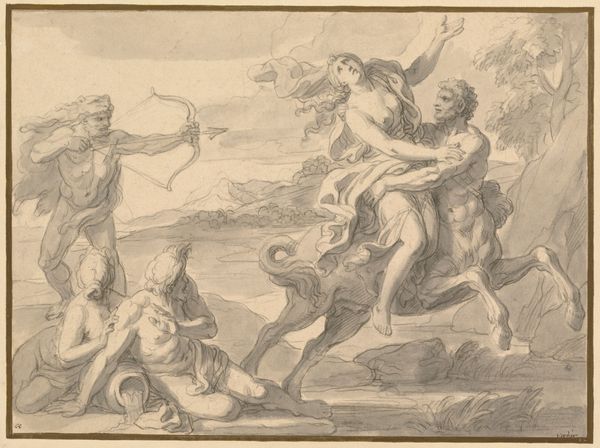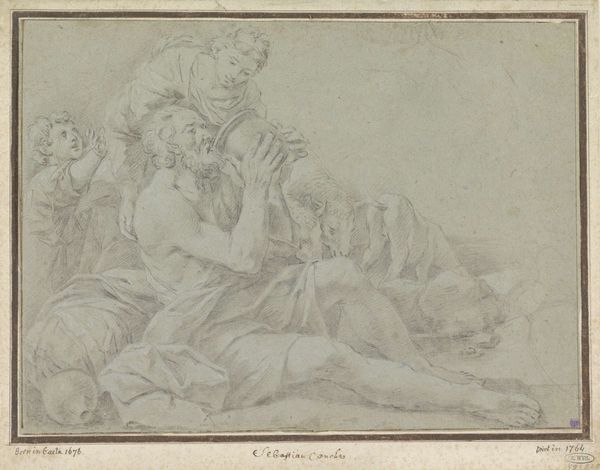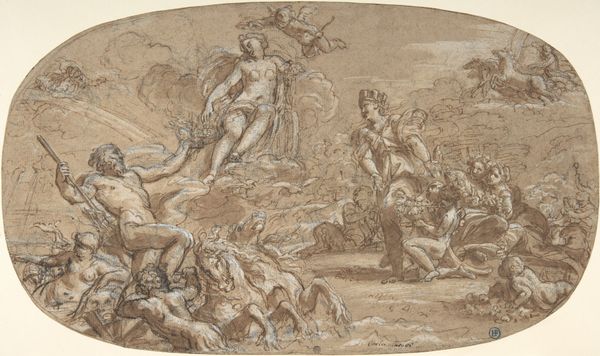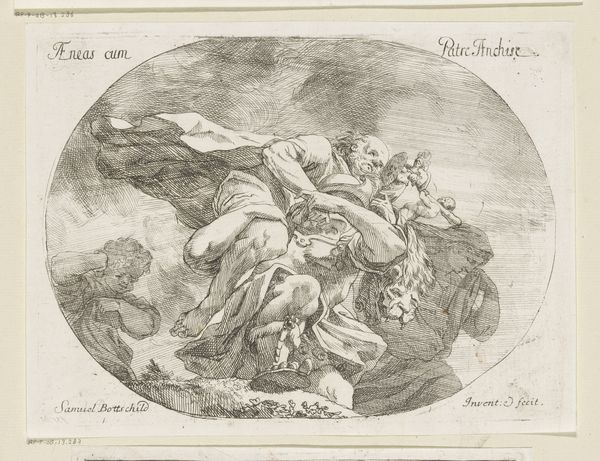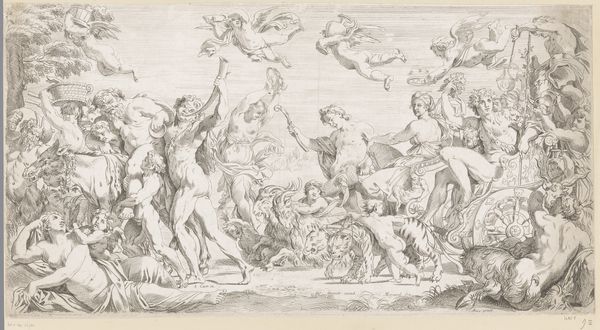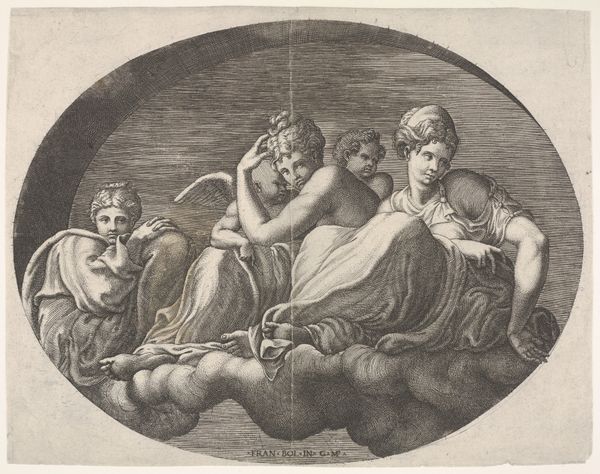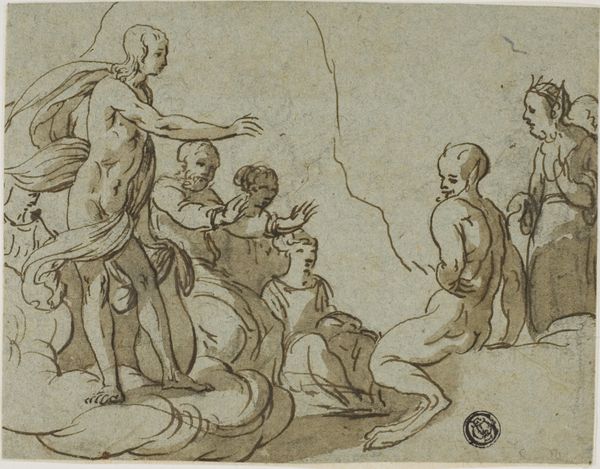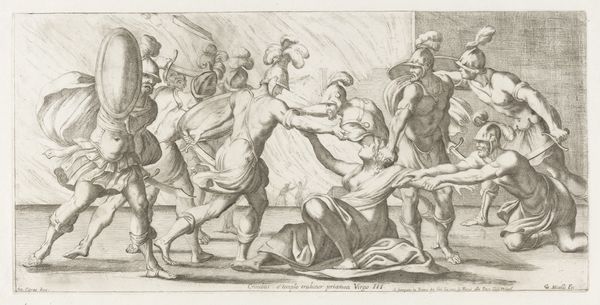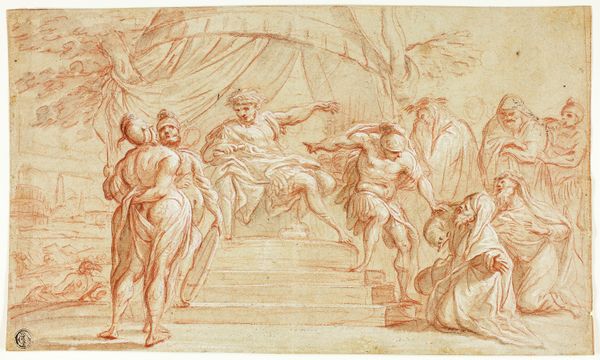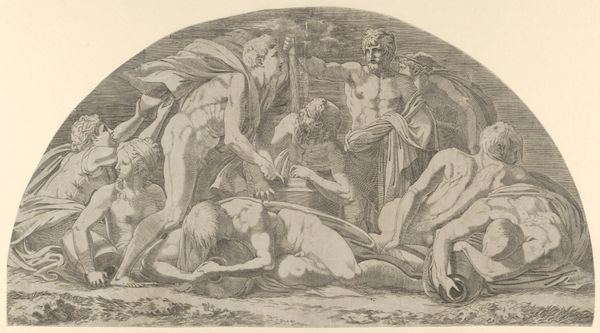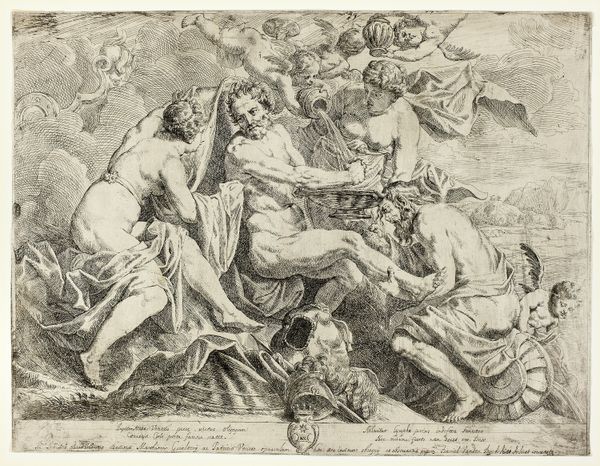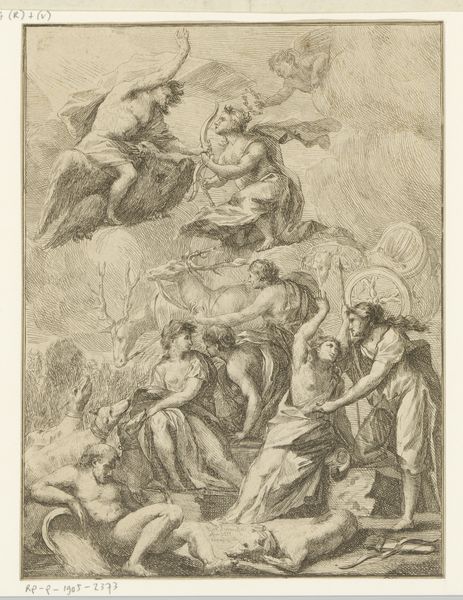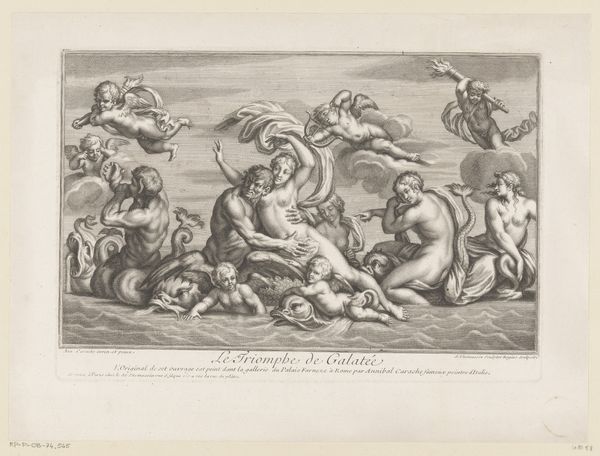
drawing, print
#
drawing
#
allegory
#
baroque
# print
#
figuration
#
history-painting
#
nude
Dimensions: sheet: 6 5/8 x 1 in. (16.8 x 2.5 cm)
Copyright: Public Domain
Editor: This is "Venus Surrounded by Putti," a drawing and print by Arthur Pond from about 1730 to 1740, housed at the Metropolitan Museum of Art. The goddess is central and serene amidst playful cherubs, all rendered in soft, flowing lines. It's such a charming scene! How do you interpret the symbolism here? Curator: The scene overflows with established allegories. Venus herself, of course, is the embodiment of love and beauty. Consider how those cherubic figures – the putti – enhance this. They represent not only love, but innocence, and playfulness. Note that the swan becomes another emblem; what meanings do swans carry in your cultural memory? Editor: Purity, grace... in fairy tales, sometimes transformation? Curator: Precisely! And Venus' association with the swan is ancient, linking her to origins, to the very source of beauty. Think of Leda and the Swan. But Pond has softened those edges. Do you see how he uses line and form to evoke gentleness rather than violent transformation? Editor: Yes, it's all very delicate. The line work seems almost tentative, especially compared to other Baroque works. It’s interesting how the symbols themselves retain power, even when the style reframes them. Curator: The interesting part resides in the way the artist used certain images and forms as established metaphors; his goal wasn't just about what he created; he was speaking to his viewer’s visual literacy. So, in this drawing and print, Arthur Pond has provided us a kind of mirror, reflecting back not only an image of Venus but also, an idea about how we collectively understand her essence. What new layers have been unlocked for you? Editor: Thinking about the collective understanding adds a depth that wasn't immediately apparent. I now view it less as a simple depiction and more as a dialogue with history. Thanks!
Comments
No comments
Be the first to comment and join the conversation on the ultimate creative platform.
